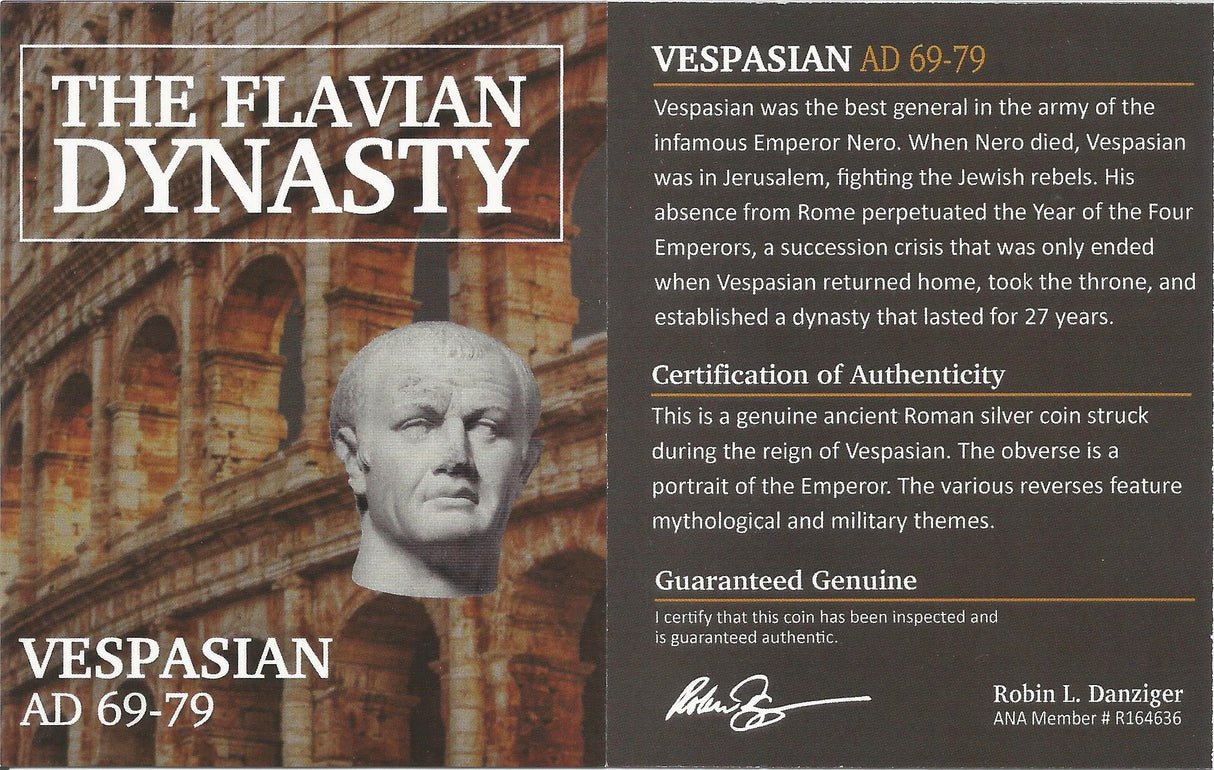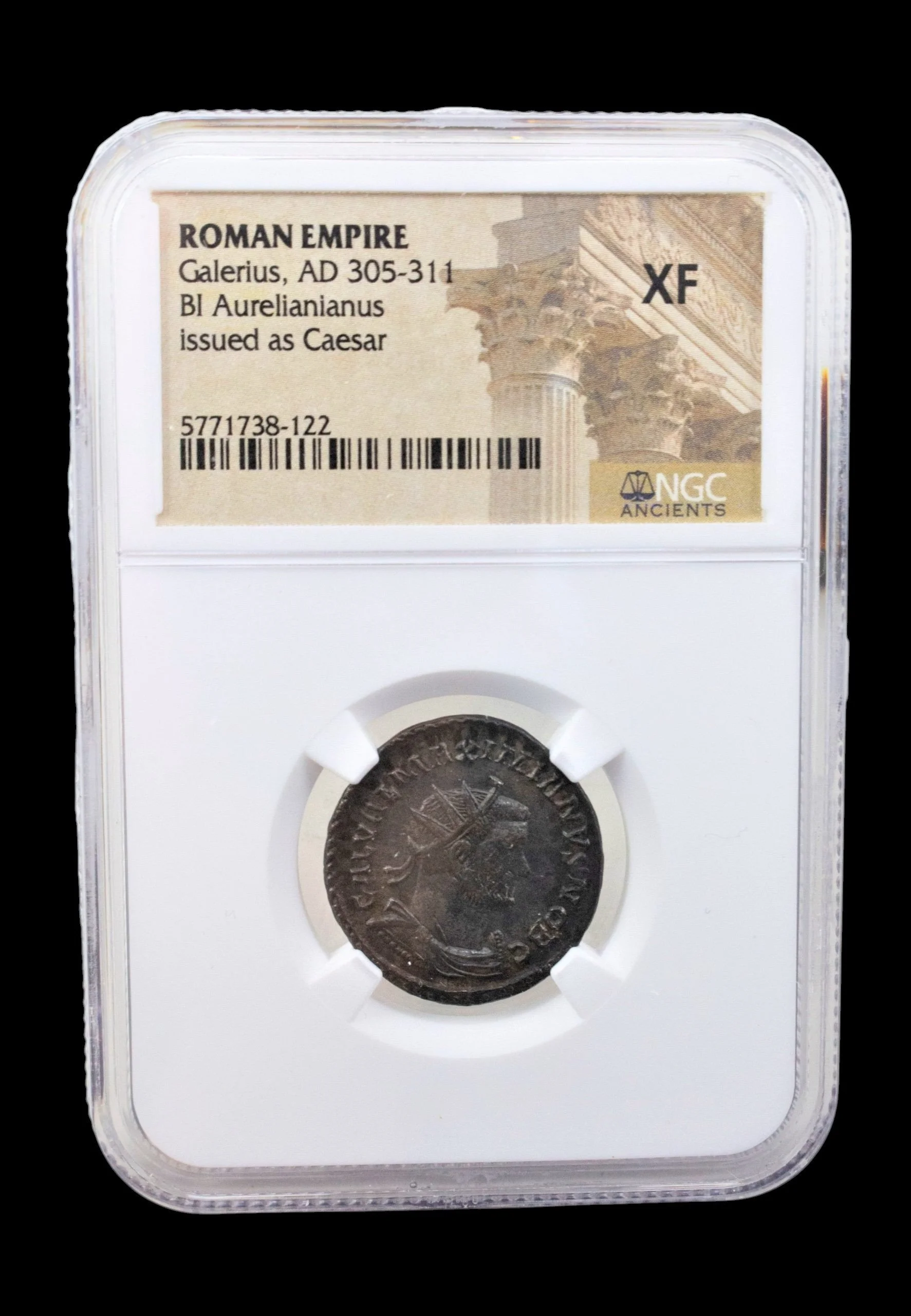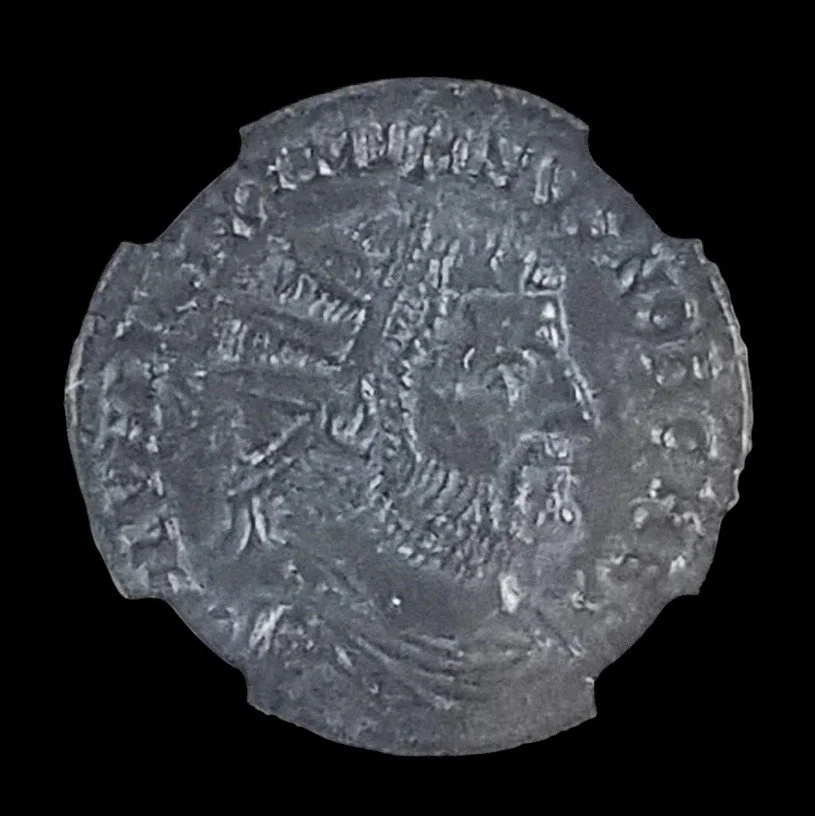 Image 1 of 7
Image 1 of 7

 Image 2 of 7
Image 2 of 7

 Image 3 of 7
Image 3 of 7

 Image 4 of 7
Image 4 of 7

 Image 5 of 7
Image 5 of 7

 Image 6 of 7
Image 6 of 7

 Image 7 of 7
Image 7 of 7








Roman Silver Coin of Emperor Vespasian (about 1,950-1,960 years ago)
The coins shown are representative examples of the grade and type, but not the actual specimens for sale. For details on NGC’s grading standards and definitions, please refer to our NGC Grading page.
This silver denarius was issued under Emperor Vespasian, the battle-hardened general who established the Flavian dynasty after emerging victorious from the chaotic Year of Four Emperors. After decades of successful military service, Vespasian brought much-needed stability to Rome following Nero's suicide and the brief civil war that followed, implementing practical reforms and undertaking ambitious building projects that transformed the imperial capital.
Coin Description:
Front side: Portrait of Emperor Vespasian facing right, typically laureate (wearing a laurel wreath), with Latin inscription giving his name and titles
Back side: May feature various Roman deities, personifications of virtues, or symbols of peace and prosperity that Vespasian wished to emphasize after the recent civil wars
Technical Details:
Silver composition
Denomination: Denarius
NGC certified in protective slab
Minted between 69-79 AD
Condition as certified by NGC
Historical Significance: Vespasian's rise to power marked a crucial turning point in Roman history, restoring stability after the turbulent end of the Julio-Claudian dynasty. A career military commander of humble origins, he had distinguished himself in Britain and during the First Jewish-Roman War before seizing power in 69 AD. As emperor, he focused on practical governance—reorganizing finances, strengthening the frontiers, and initiating major building projects including the Colosseum (Flavian Amphitheater). His pragmatic approach extended to his personal life; when criticized for taxing public urinals, he reportedly held up a coin and noted "money doesn't stink," a saying that lives on in his legacy, along with the linguistic vestige of his name for public toilets in several Romance languages (vespasiano in Italian, vespasienne in French).
The coins shown are representative examples of the grade and type, but not the actual specimens for sale. For details on NGC’s grading standards and definitions, please refer to our NGC Grading page.
This silver denarius was issued under Emperor Vespasian, the battle-hardened general who established the Flavian dynasty after emerging victorious from the chaotic Year of Four Emperors. After decades of successful military service, Vespasian brought much-needed stability to Rome following Nero's suicide and the brief civil war that followed, implementing practical reforms and undertaking ambitious building projects that transformed the imperial capital.
Coin Description:
Front side: Portrait of Emperor Vespasian facing right, typically laureate (wearing a laurel wreath), with Latin inscription giving his name and titles
Back side: May feature various Roman deities, personifications of virtues, or symbols of peace and prosperity that Vespasian wished to emphasize after the recent civil wars
Technical Details:
Silver composition
Denomination: Denarius
NGC certified in protective slab
Minted between 69-79 AD
Condition as certified by NGC
Historical Significance: Vespasian's rise to power marked a crucial turning point in Roman history, restoring stability after the turbulent end of the Julio-Claudian dynasty. A career military commander of humble origins, he had distinguished himself in Britain and during the First Jewish-Roman War before seizing power in 69 AD. As emperor, he focused on practical governance—reorganizing finances, strengthening the frontiers, and initiating major building projects including the Colosseum (Flavian Amphitheater). His pragmatic approach extended to his personal life; when criticized for taxing public urinals, he reportedly held up a coin and noted "money doesn't stink," a saying that lives on in his legacy, along with the linguistic vestige of his name for public toilets in several Romance languages (vespasiano in Italian, vespasienne in French).



























